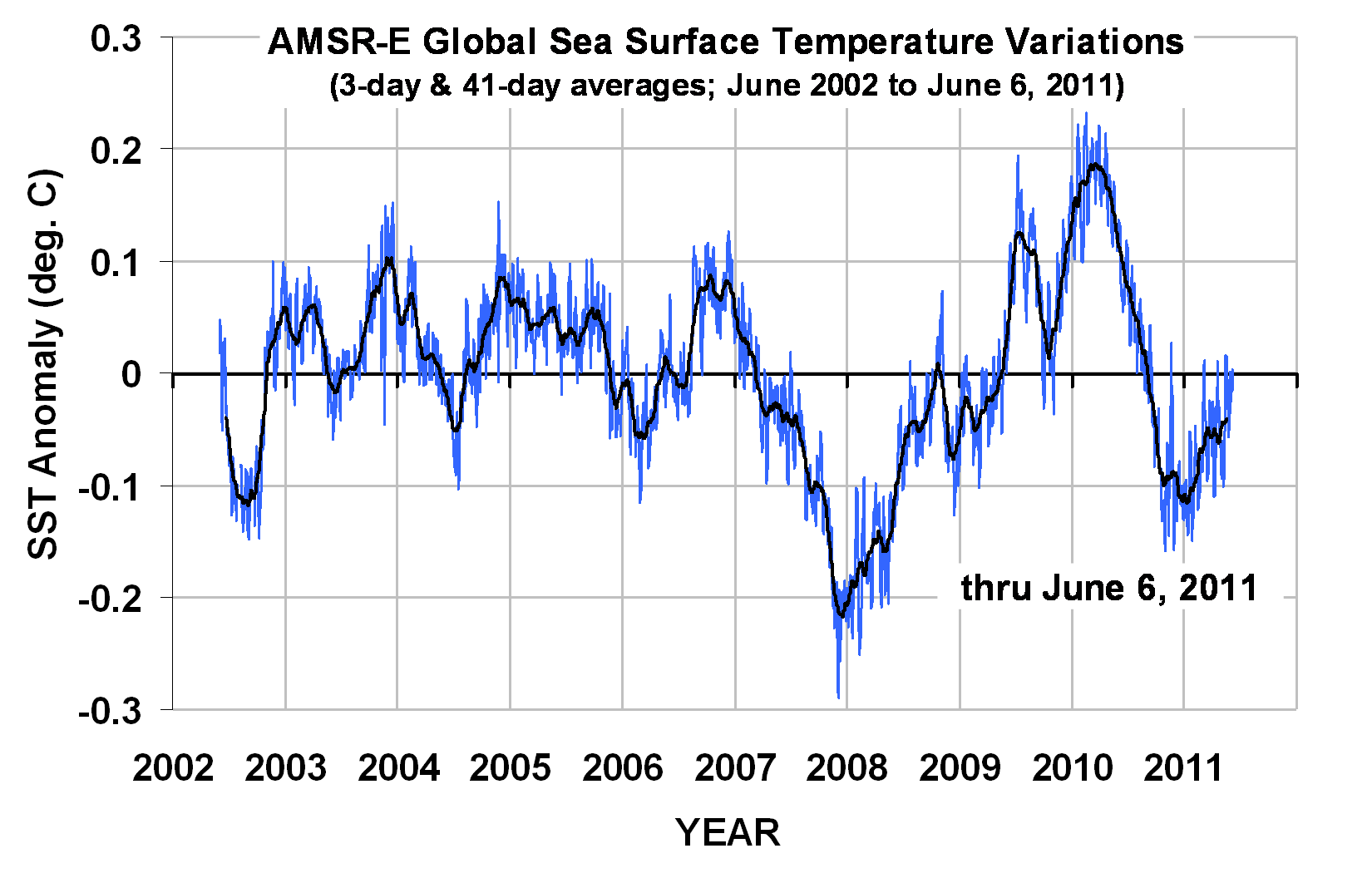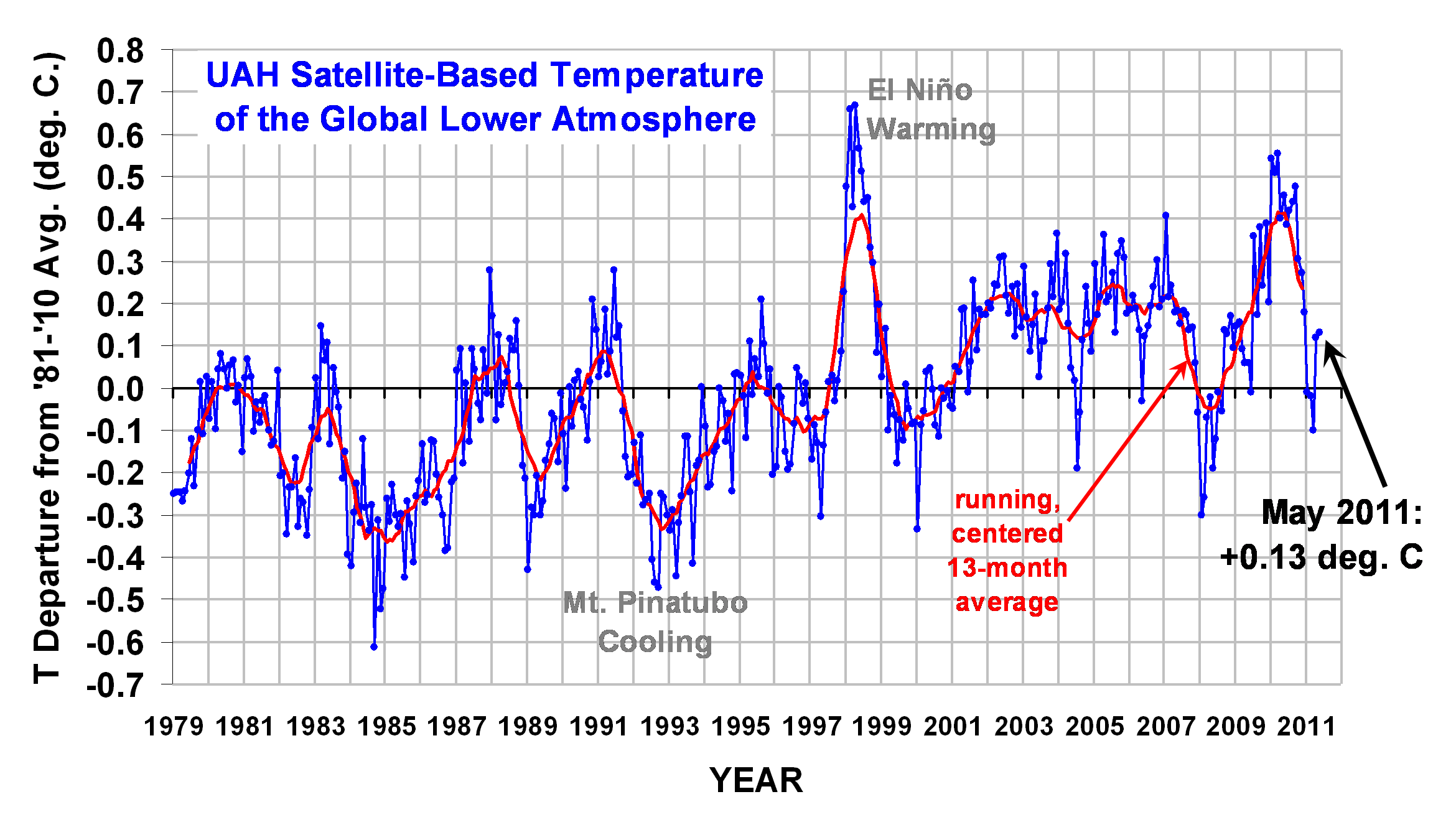Little Change from Last Month
The global average lower tropospheric temperature anomaly for May, 2011 was just about the same as last month: up slightly to +0.13 deg. C (click on the image for a LARGE version):
Note the tropics continue to warm as La Nina fades:
YR MON GLOBAL NH SH TROPICS
2011 1 -0.010 -0.055 0.036 -0.372
2011 2 -0.020 -0.042 0.002 -0.348
2011 3 -0.101 -0.073 -0.128 -0.342
2011 4 0.117 0.195 0.039 -0.229
2011 5 0.131 0.143 0.120 -0.044
I have also updated the global sea surface temperature (SST) anomalies computed from AMSR-E through yesterday, June 8 6 (note that the base period is different, so the zero line is different than for the lower tropospheric temperature plot above):

 |

 Home/Blog
Home/Blog




